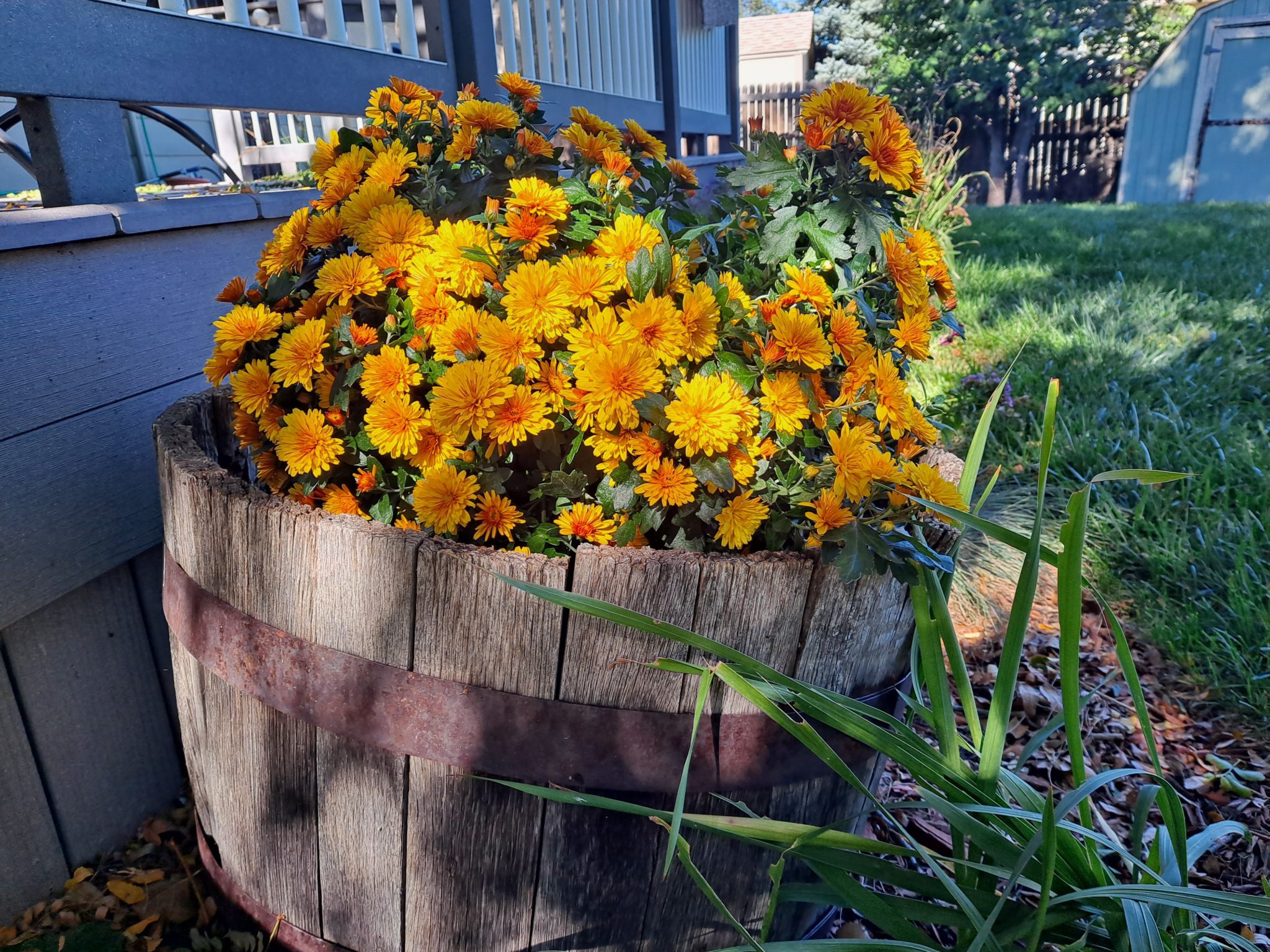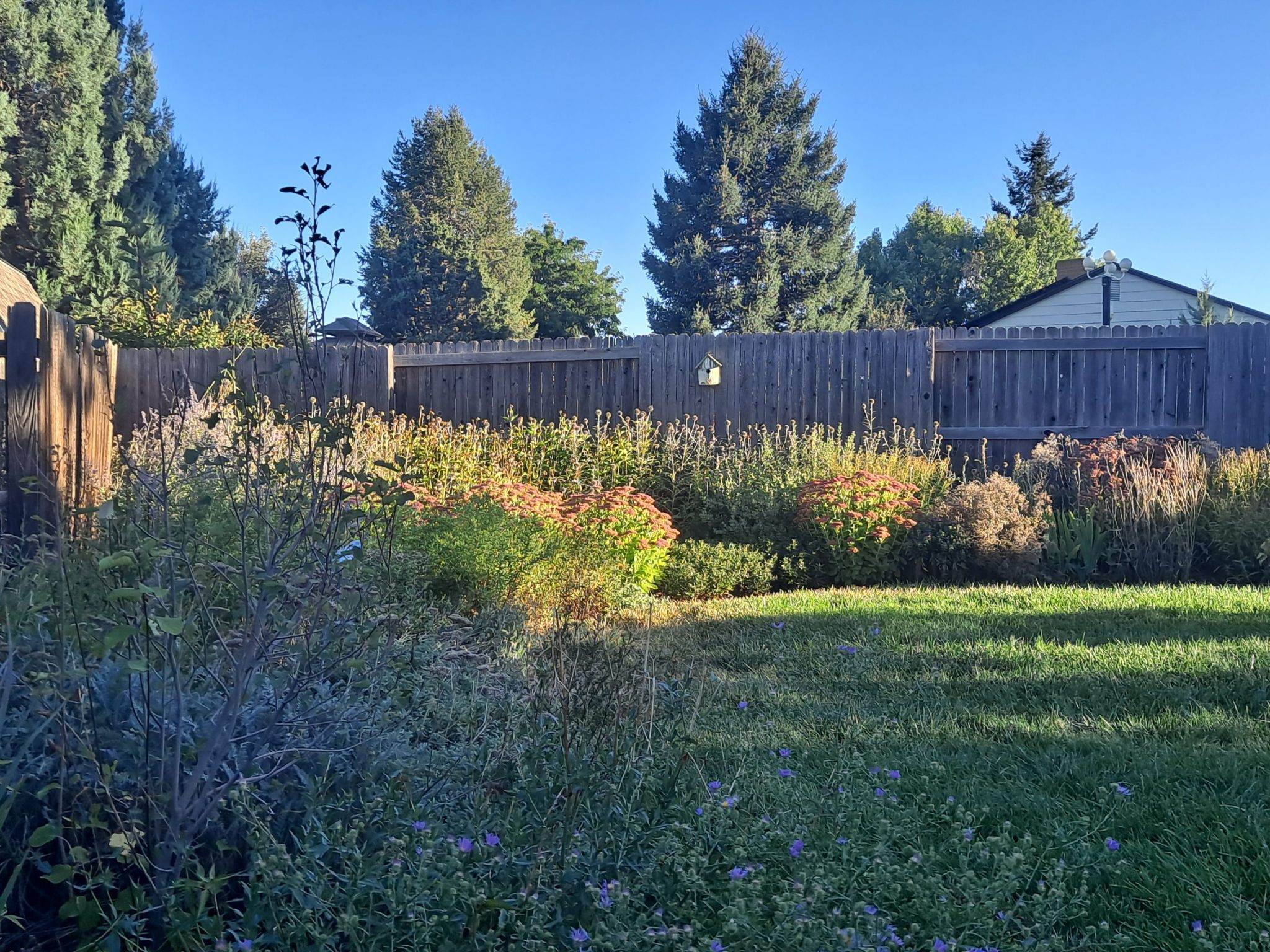
The summer heat may have chased me back indoors for most of August, but that doesn’t mean I haven’t been doing some projects out in the garden. It’s funny, but from about mid-July until Labor Day, the very height of the growing season, there really isn’t much for a gardener to do. Oh, there’s mowing the lawn and pulling weeds of course. And if it’s a particularly dry year, perhaps water the border a couple of times. But otherwise, the garden is pretty much on auto-pilot.
After Labor Day, however, things really start to pick up around the Vintage estates. And this year was no exception.
Let’s start with the back yard and see what I have been up to.
Out with the old, in with the new
Every now and then the gardener needs to take stock and see what is working in the garden, and what is not. Once a weakness has been identified, the gardener needs to decide if the problem can be solved, or if it needs to be removed. I decided that there were two sore spots that honestly needed drastic surgery.
A few years ago, I dug out a serviceberry in the birdbath garden that was dying: (This This week in the garden: repairs and renovations). Surprisingly, a few weeks later the tree started sprouting new shoots. Apparently, this poor tree wasn’t giving up the ghost so easily. I let it be and over the past couple of years it had begun massing out.
Until this spring. We had unprecedented rains in the spring (7 inches in one storm alone!), and this shrub began to yellow out, a sure sign of chlorosis (lack of iron). I thought perhaps the rain was smothering the roots and preventing the shrub from accessing iron. So, I fertilized it with an iron supplement and kept an eye on it to see if there was any sign of improvement.
There wasn’t. As you can in the picture below, by late summer the poor thing looked awful (in the photo below, it’s the tall spindly thing with the yellow leaves).
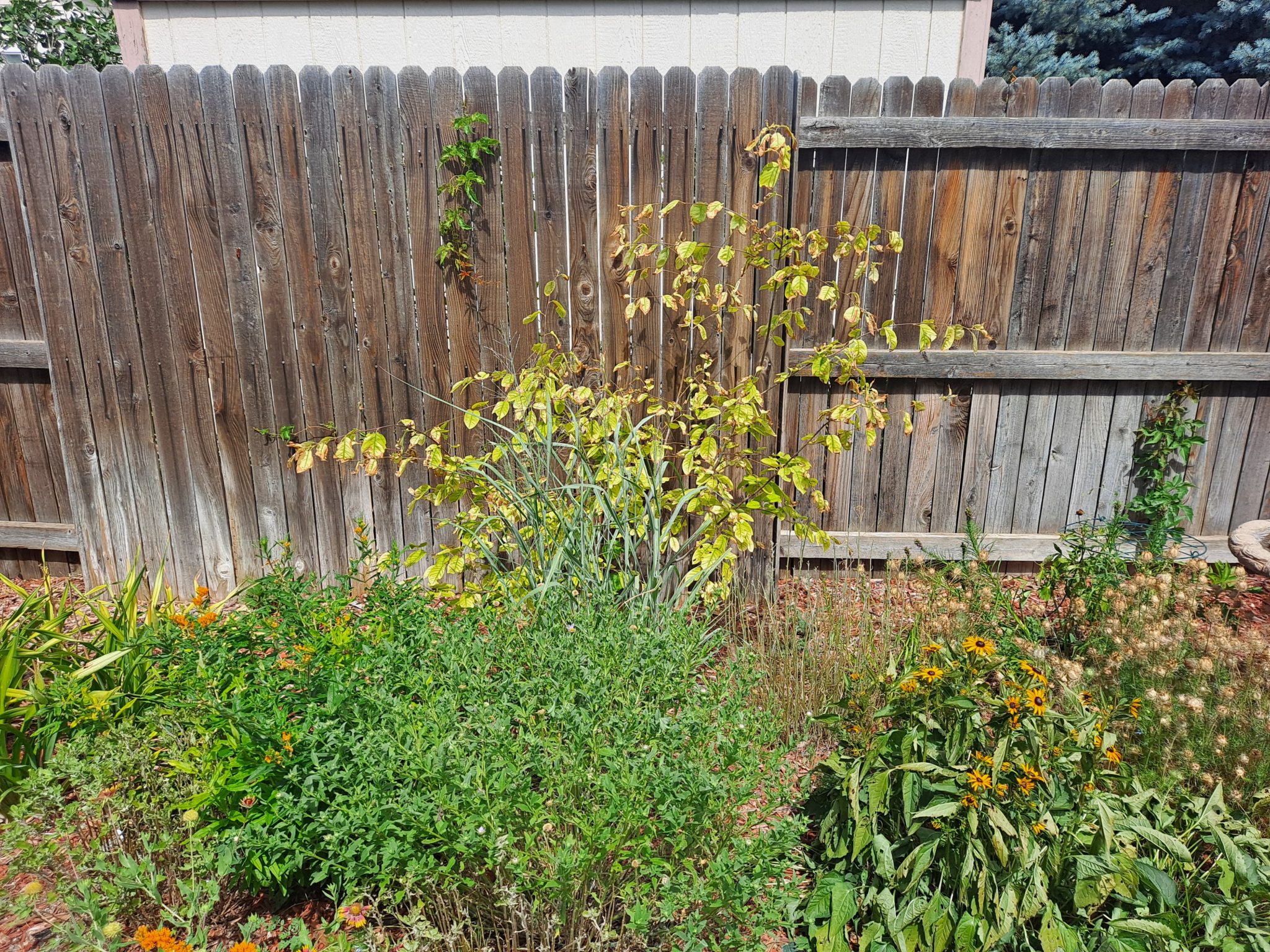
So I dug it out.
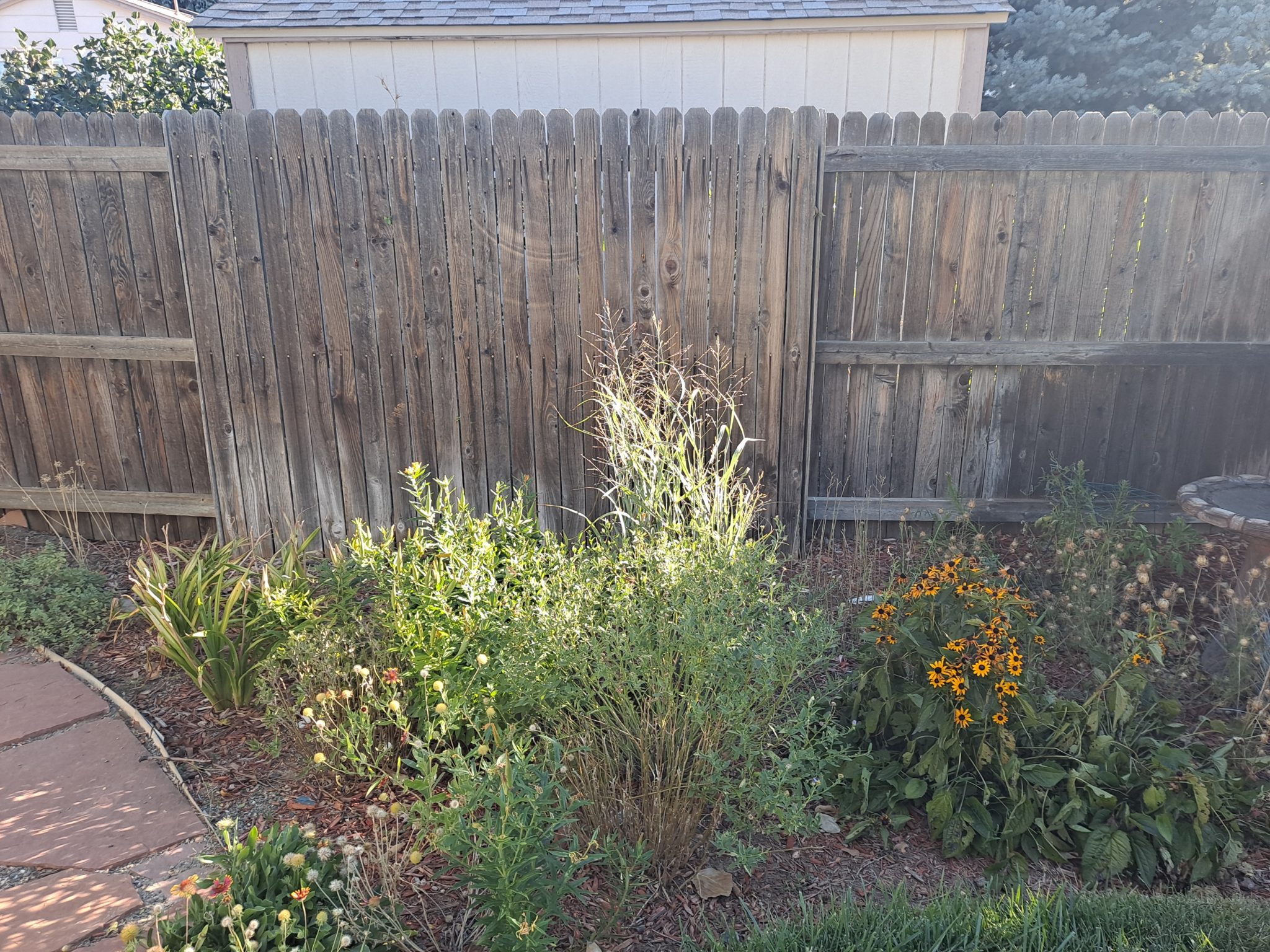
And in the process, I discovered the problem. It wasn’t chlorosis or disease: the shrub had practically no root ball at all! I have no idea how it got as big as it did with no established roots.
In its place, I planted a native chokeberry (Aronia) named ‘Lowscape Hedger’. This chokeberry gets 4-5 feet tall and about 2-3 feet wide. It’s a three-season plant: white flowers in spring, dark astringent (hence the name) berries in late summer, and red foliage in fall. Hopefully it does better than the serviceberry.
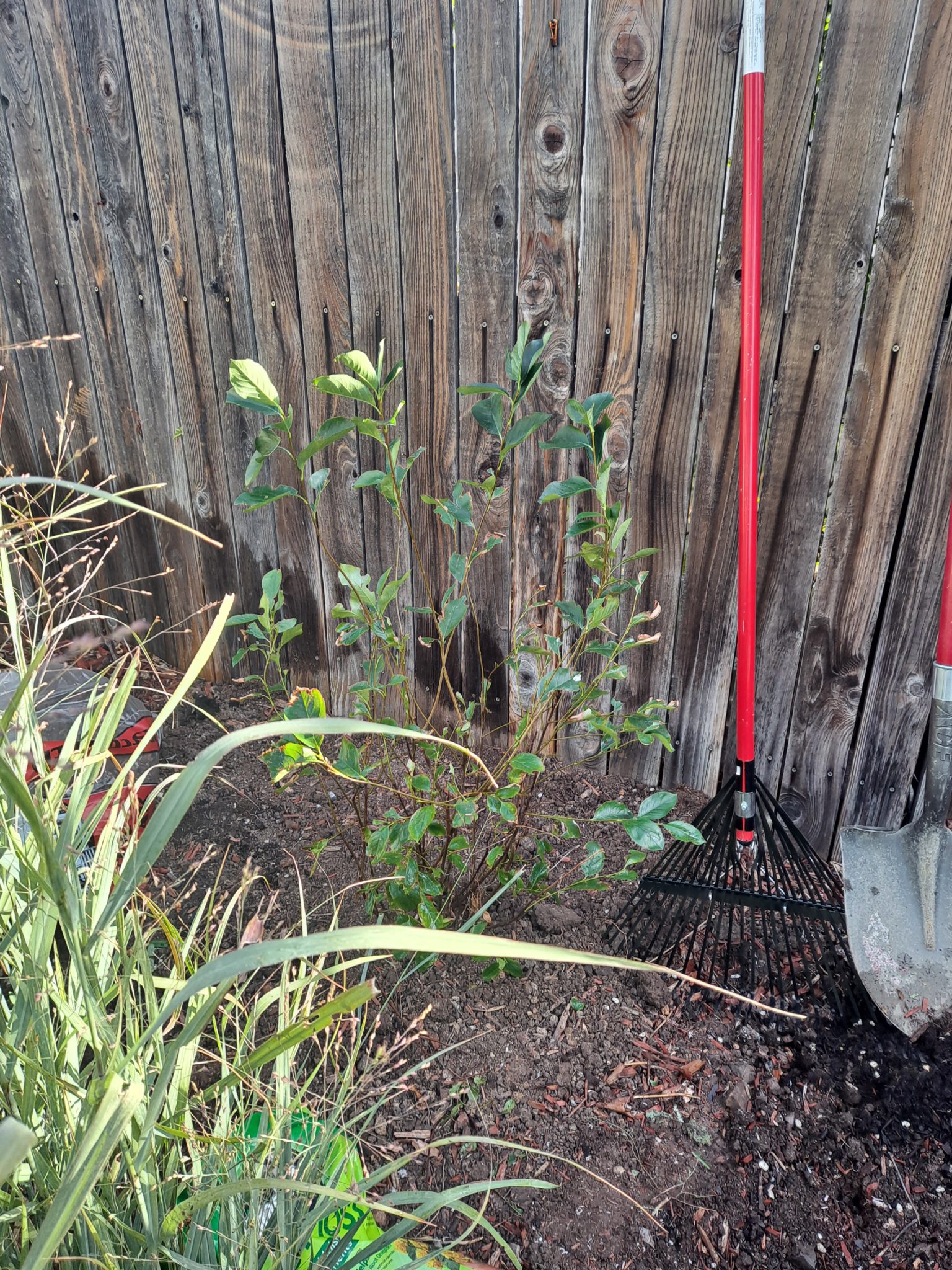
Elsewhere in the backyard
In the photo below, you can see a ‘Peking’ cotoneaster. This shrub can get up to 10-12 feet tall and wide. Some people plant several of them in a row, then trim them back annually to form a hedge. I keep mine pruned back because I don’t want it to overwhelm the border.
Over the summer I came to the realization that I am not thrilled with this plant. The truth is it’s pretty boring. When it blooms in spring, its flowers are so tiny you practically have to use a magnifying glass to see them. In good years it might set some black berries in late summer that last for a very short time, as the birds seem to love them. Its only real attraction is that it does have dramatic fall color: it turns vivid shades of orange and yellow. That’s a lot of real estate for a plant that only has a week or two of interest.
During the rest of the growing season, however, it’s basically just a green shapeless blob. I have mocked lilacs in the past because they too eat up a lot of space for a plant that only blooms for maybe a couple of weeks. Lilacs don’t even have good fall color, so it also is a one-season wonder. But lilacs at least have good shape and texture during the rest of the year. You can look at a lilac in August and say, “that there is a handsome plant!”. The ‘Peking’ cotoneaster is the Steve Buscemi of shrubs.
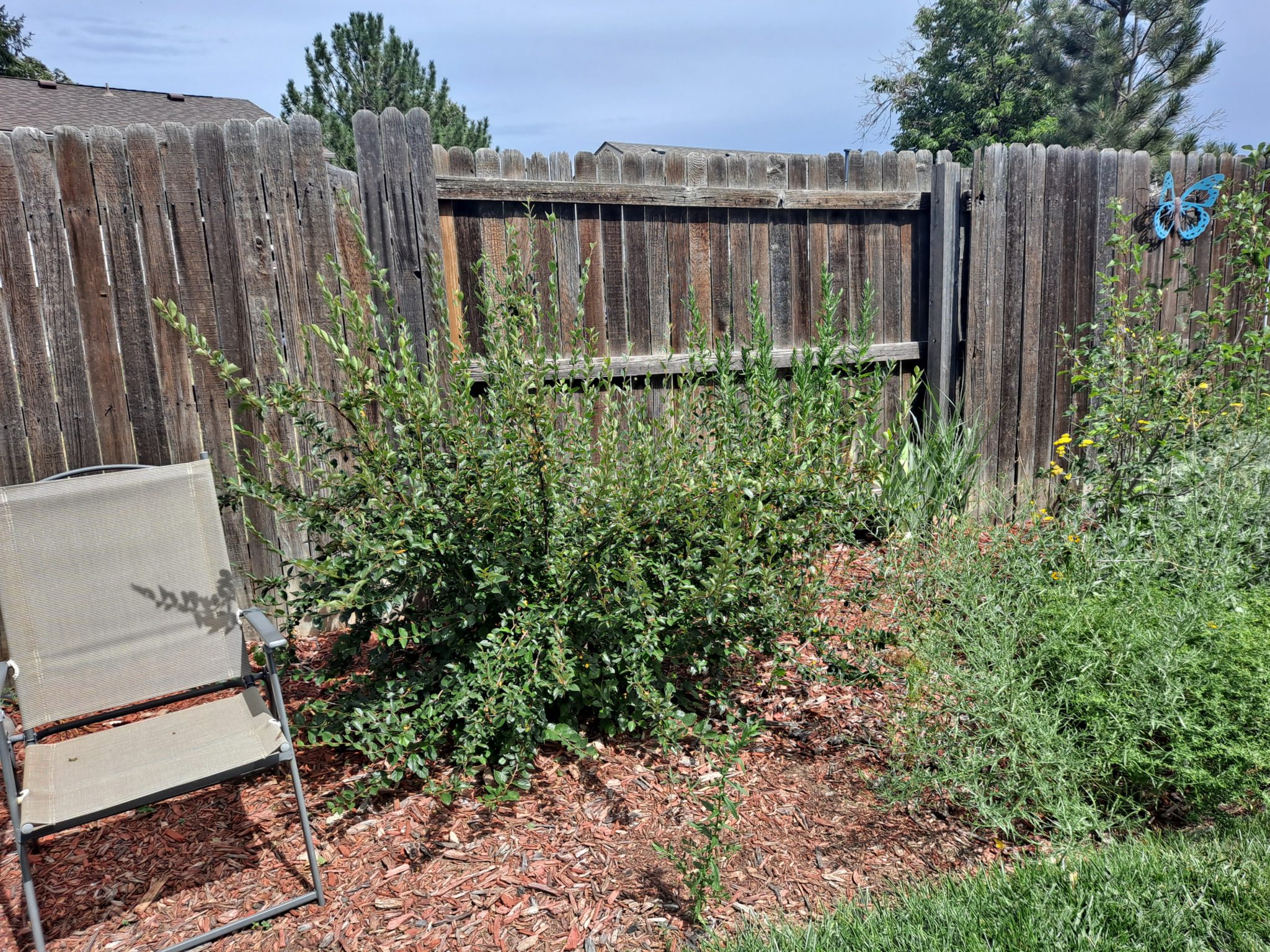
So I dug it out.
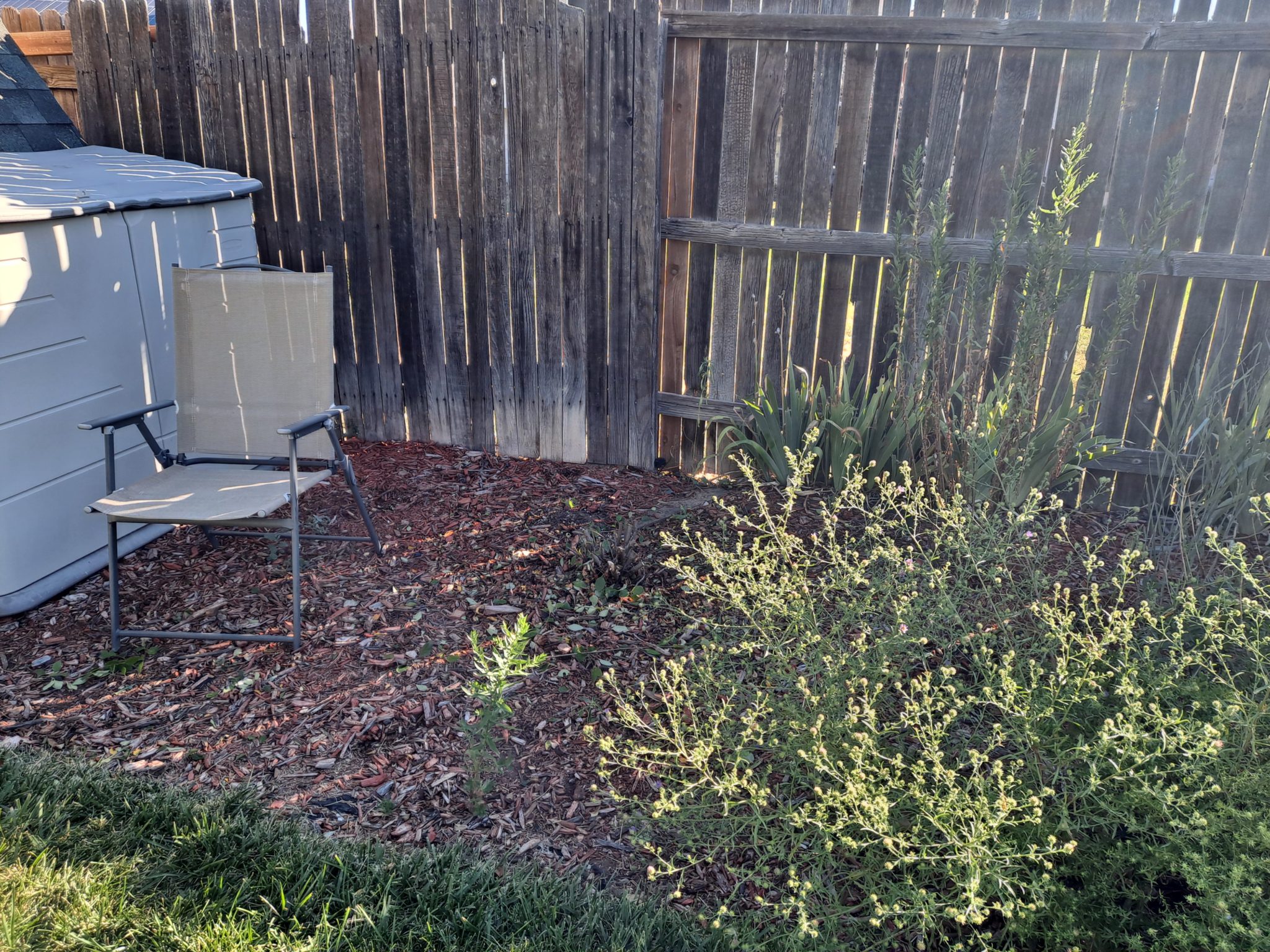
In its place I have planted another chokeberry. This one’s called ‘Snowfire’. It also is a dwarf shrub, one that gets to about 4 feet high and wide. It’s supposed to be absolutely covered with white blossoms in spring (hence the name), with lots of berries in late summer and outstanding fall color. Another three season of interest plant.
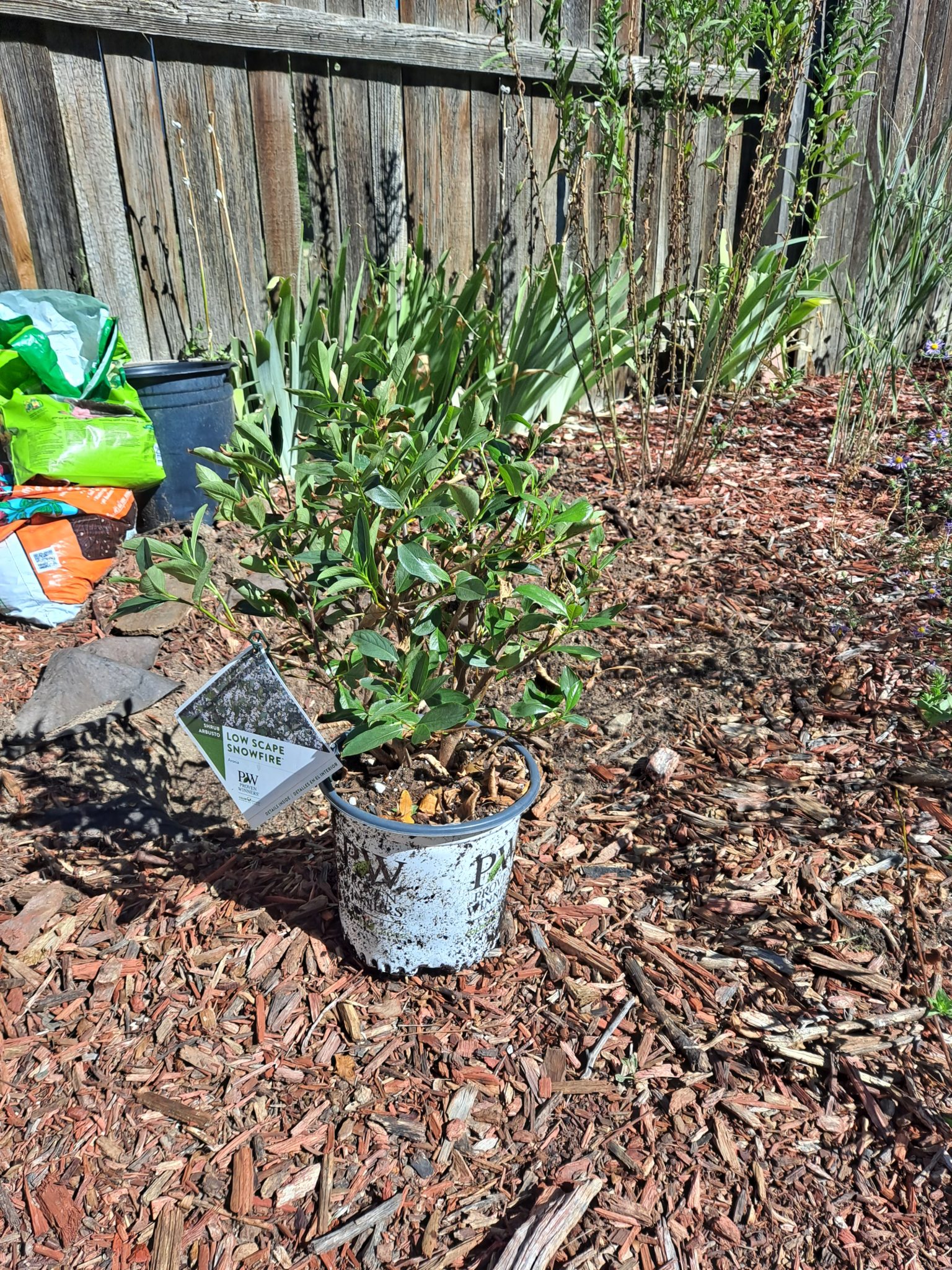
Now to the front yard
I have been asked by a couple people how is the front yard is doing. Overall, it’s doing pretty good. Plants haven’t grown much since when we planted them, but that’s to be expected. They’re busy getting established. The important thing is that they survived the fiery furnace of July and August, and that is no mean feat. That was my biggest concern about planting so late in June.
There are a couple of flies in the ointment, however, and I’ll cover those before I get to the positives.
In the photo below, you can see one of the two ‘Lena” brooms we planted. As you can tell, it’s not looking so good. In fact, both of them look pretty much dead. I have no idea what the problem is: too much water? not enough water? too much sun? not enough sun? Not knowing the problem is a source of frustration for me. Everything around them is doing just fine. And I had to special order these damn things from a nursery in Oklahoma. Not cheap.
But looks can be deceiving. These plants are mostly dead, but not all dead. There is a trick for seeing if a plant is living or deceased. Lightly scratch the outer bark along a stem with thumbnail: if the tissue underneath the bark is green, it’s still alive. If it is brown, well, it is all dead. Then all you can do is go through its clothing and look for loose change.
I did such a test on these brooms, and the lower portions of the plants are still green under the bark, which means they are technically still alive. The question is, will they make it through the winter?
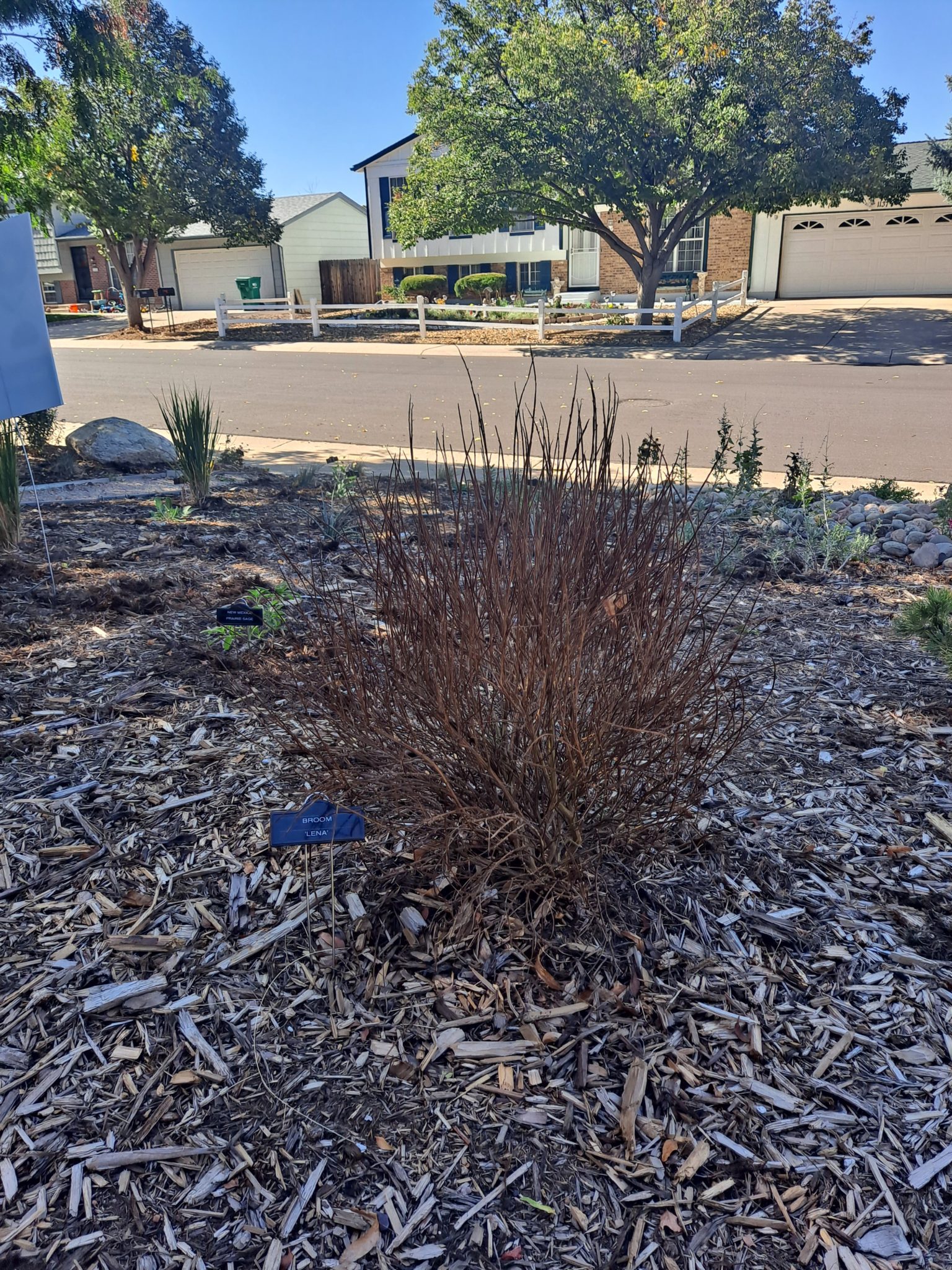
If they don’t, I will not replace them with more brooms since I will have no idea what might have killed them. If they’re that finicky, they have no place in a low-water/low-maintenance landscape. I’ll replace them with ‘Ruby Ribbons Panicum virgatum ‘RR1’ RUBY RIBBONS – Plant Finder.
G&*$!%#n f%^*$!g RABBITS!
A different scourge has afflicted some of the plants in the front yard and, in this case, I know exactly what the problem is: fricking rabbits. You can see in the photo below where they have been pawing through the mulch looking for something to devour.
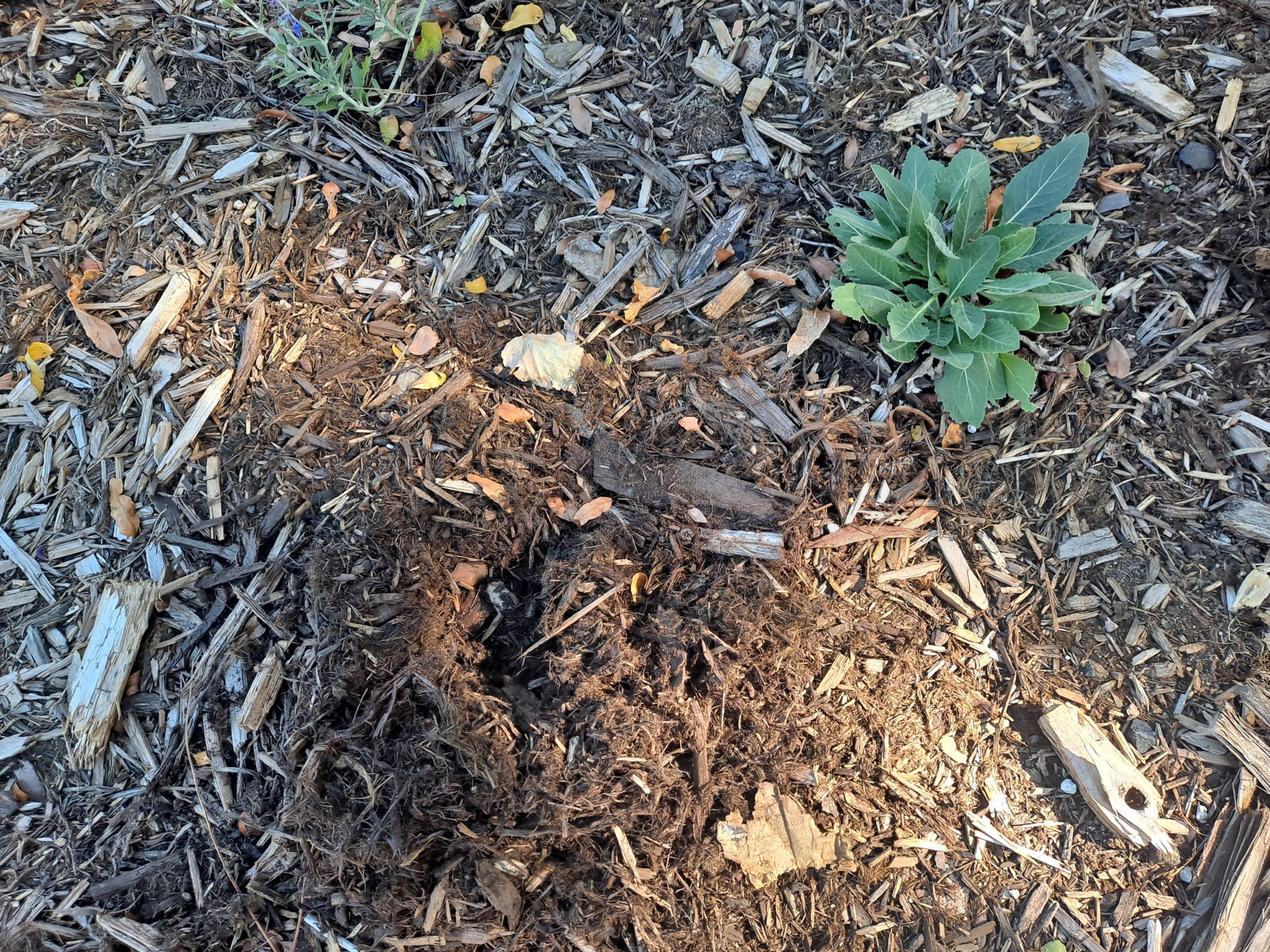
The plant that these furry pests seem to like the most is ‘Turkish’ veronica, also known as speedwell. A low growing plant, veronicas produce a plethora of tiny little flowers in late spring. They make great groundcovers. Plant enough of them in one spot, and when they bloom it can for a short time look like a tiny pond has appeared in the landscape.
I planted 27 of these things, and I have no idea how many survived the ravenous rabbits. I told a neighbor that when you plant rabbit food, rabbits are going to eat it. Apparently, I set out an all you can eat salad bar for these damn rodents.
It’s very hard to show a negative, but in the picture below you can see where a Turkish speedwell isn’t where one should be.
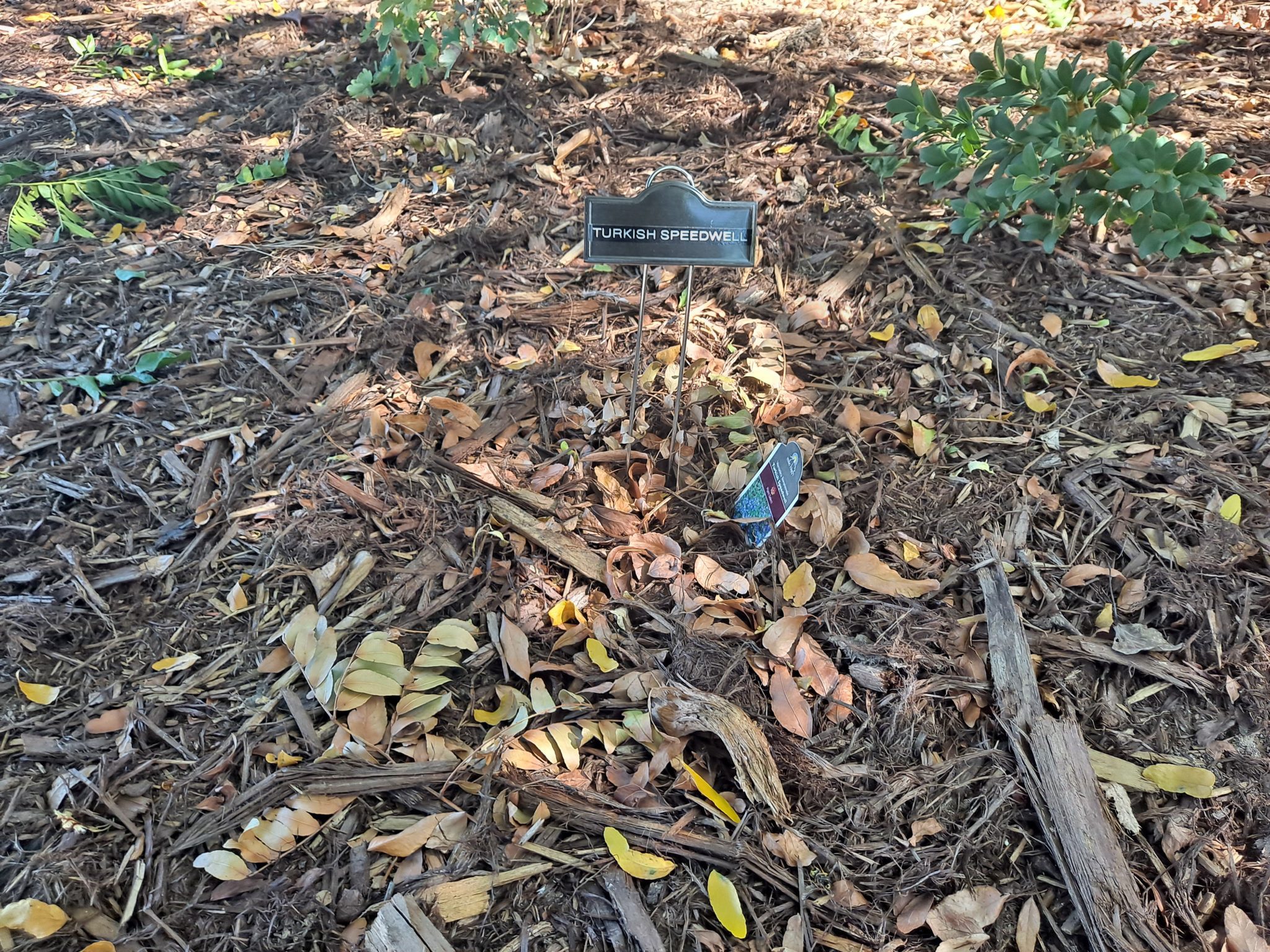
Here are a few speedwells the rabbits have overlooked. This what they are supposed to look like.
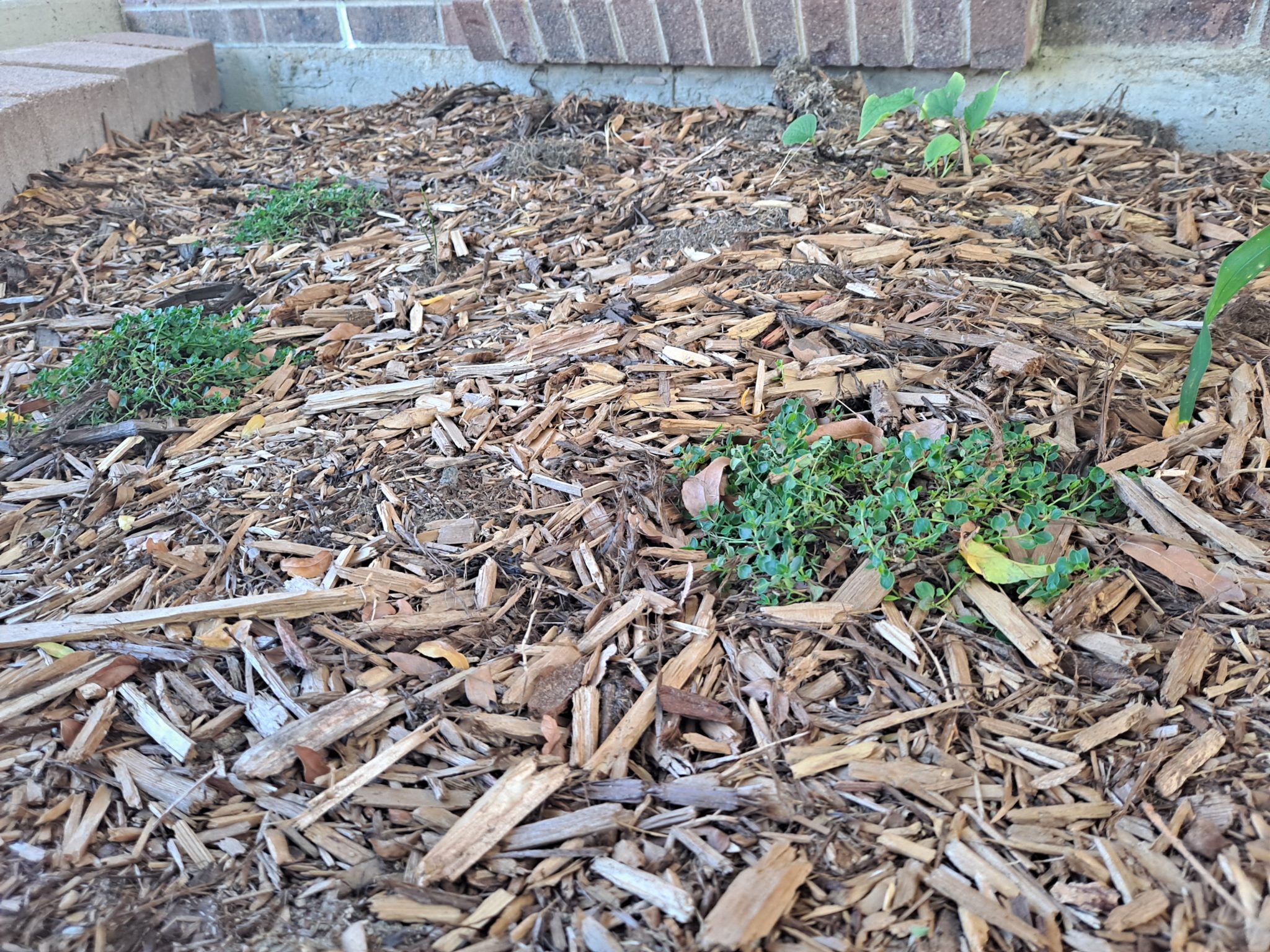
On a more postive note
Ok, that’s enough of what’s gone wrong. Let shift our focus now to what has gone right.
As I said earlier, most of the plants survived the hottest part of the summer. This is a big win. Ordinarily I don’t like to plant in early summer because then I have to baby whatever I’ve planted through very harsh conditions. Far better to plant in spring or autumn when the temperatures are more conducive to healthy plant life. However, since we finished the waterwise overhaul in June, we kind of had no choice but to plant in early summer.
Anyway, let’s see how things have fared.
Below you can see the bright purple blooms of ‘October Skies’ aster, and behind them is the reddish/pink flowers of ‘Sonoran Sunset’ agastache. Looking quite autumnal I must say. Speaking of behinds, you can also see Bailey’s behind in amongst the flowers as she sniffs out the bunnies.
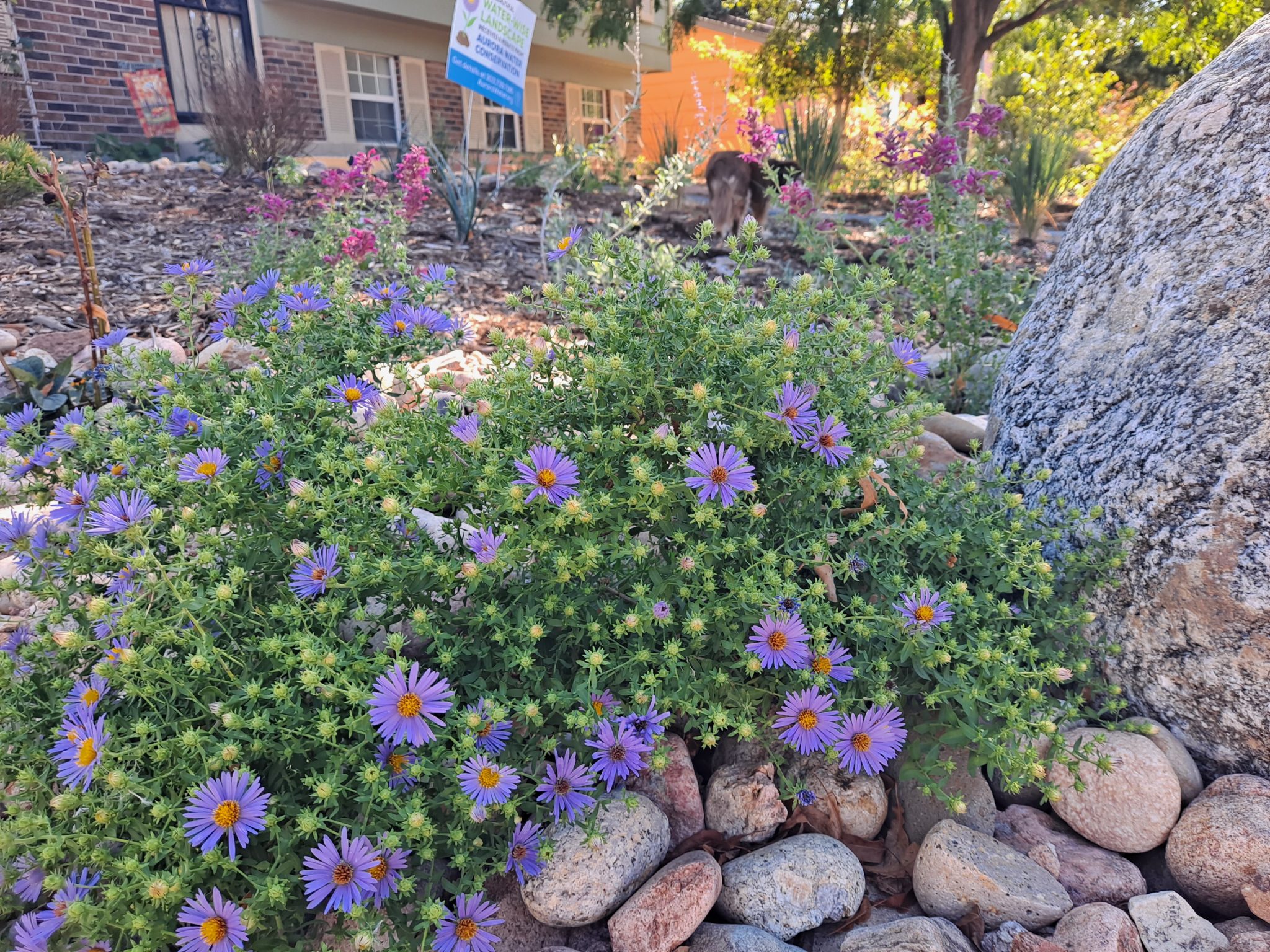
In the next photo, you can see that the ornamental grasses and ‘Red Texas” yucca are doing fine. In the foreground, you can see where I planted a Colorado native called Chocolate flower. These tough plants usually bloom in late spring, but one of them decided to put on a late season show.
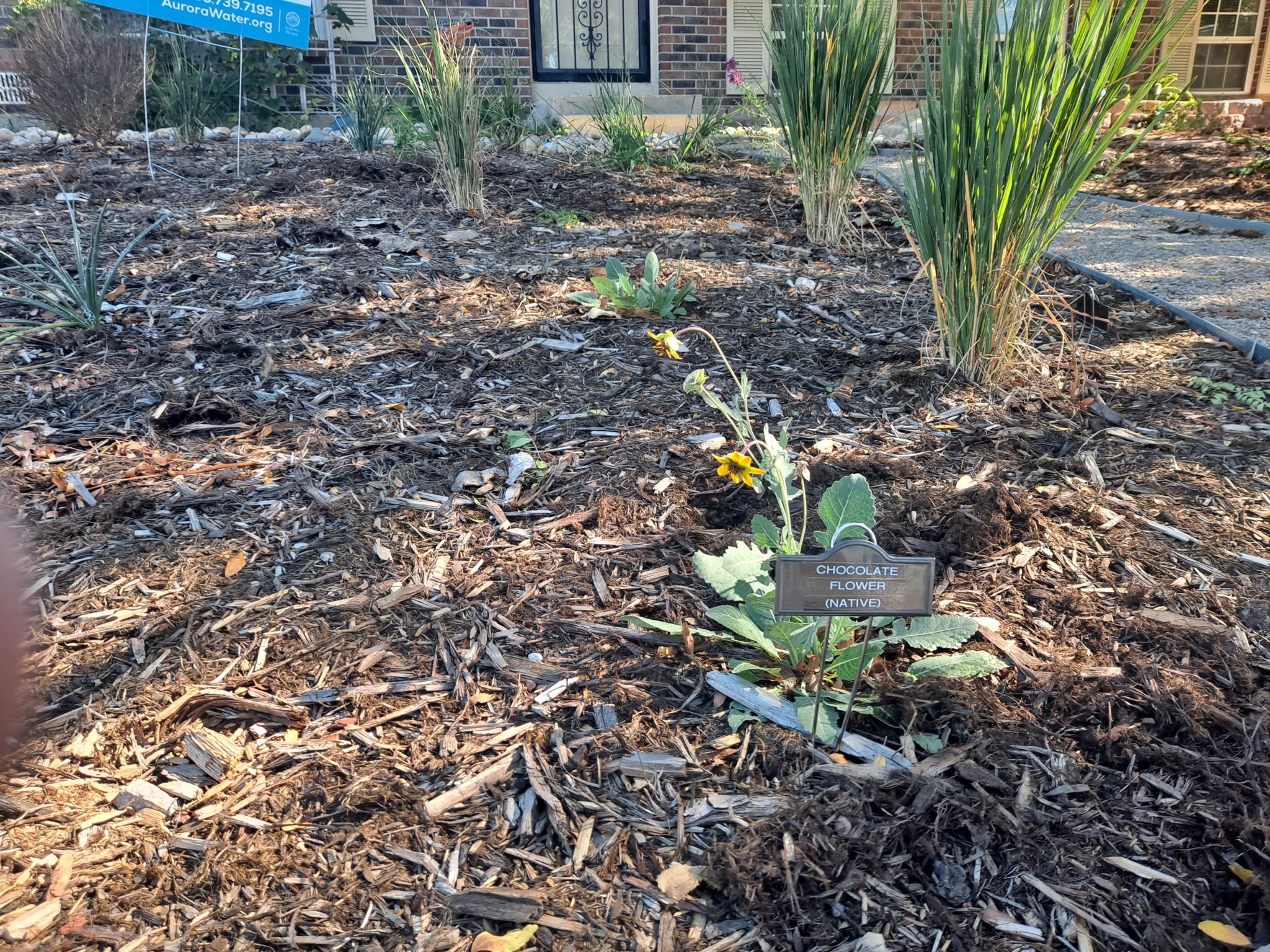
Next, we come to plants I put in the ground in early September. A native to the Rocky Mountain region as well, New Mexico prairie sage sports sky-blue flowers in late summer and early fall. And I mean Colorado sky blue, not that pale hue that easterners laughingly call sky blue. Obviously, they haven’t been in the ground long enough to bloom yet, but they should look great next year.
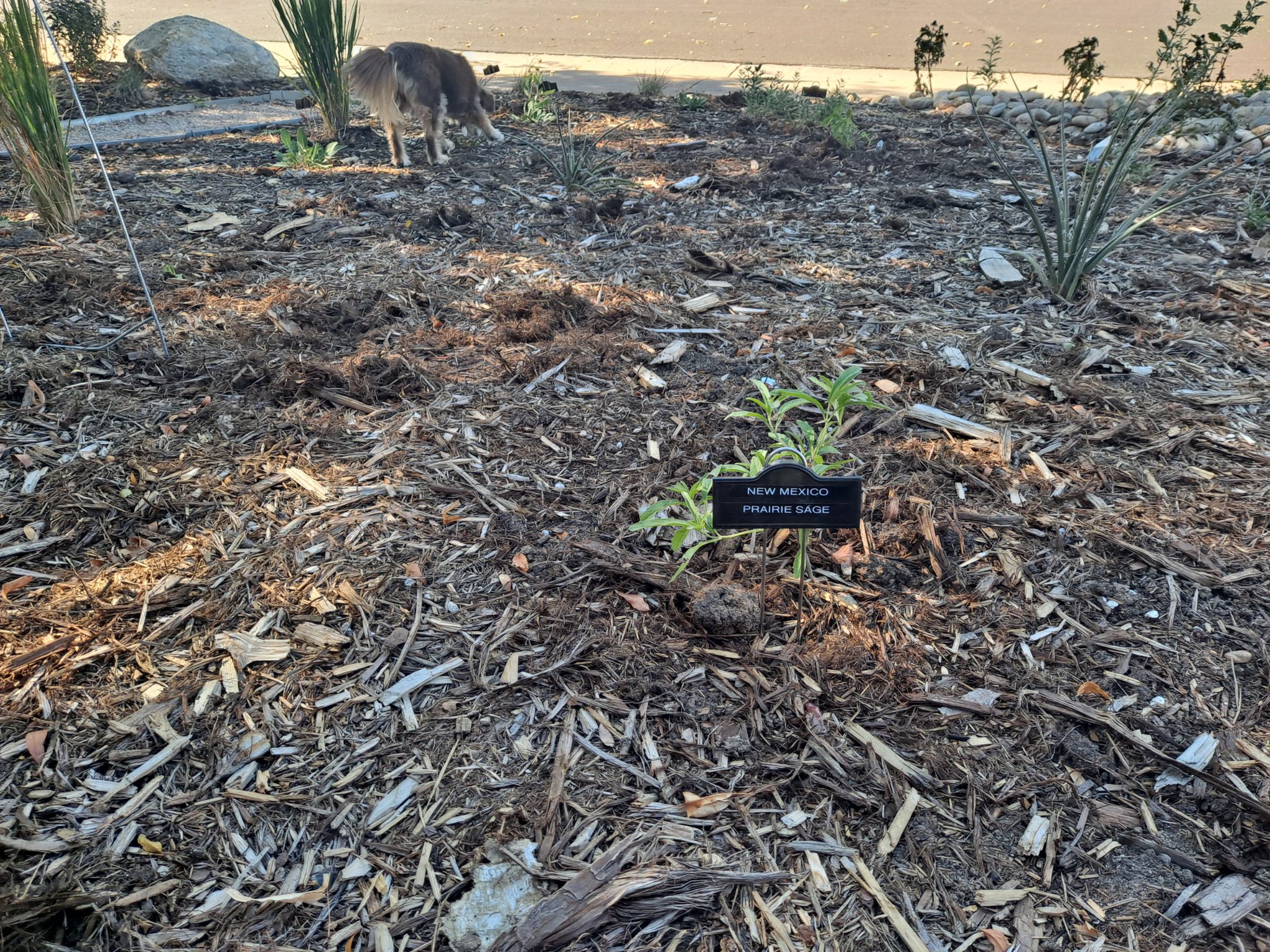
Elsewhere in the yarden
I’ll close out with a couple of photos from elsewhere in the Vintage yarden. Below you see the white bloom of a Japanese anemone. I think the official name is anemone ‘Honorine Jorbert”. I’m pretty thrilled about this, because these anemones haven’t bloomed for us in a couple of years. Good to know that they still can.
Behind the anemone you can see Hosta leaves peeking out. This poor Hosta has had a rough go of it since I first planted it. I never could seem to find the right place where it could thrive. A couple of years ago I put it here in the border right in front of the living room window. It seems to like its new home. This is the biggest it has ever gotten. I don’t know if this is as big as it gets, or if it will continue to grow larger in the seasons to come. Just the fact it is thriving is good enough for me.
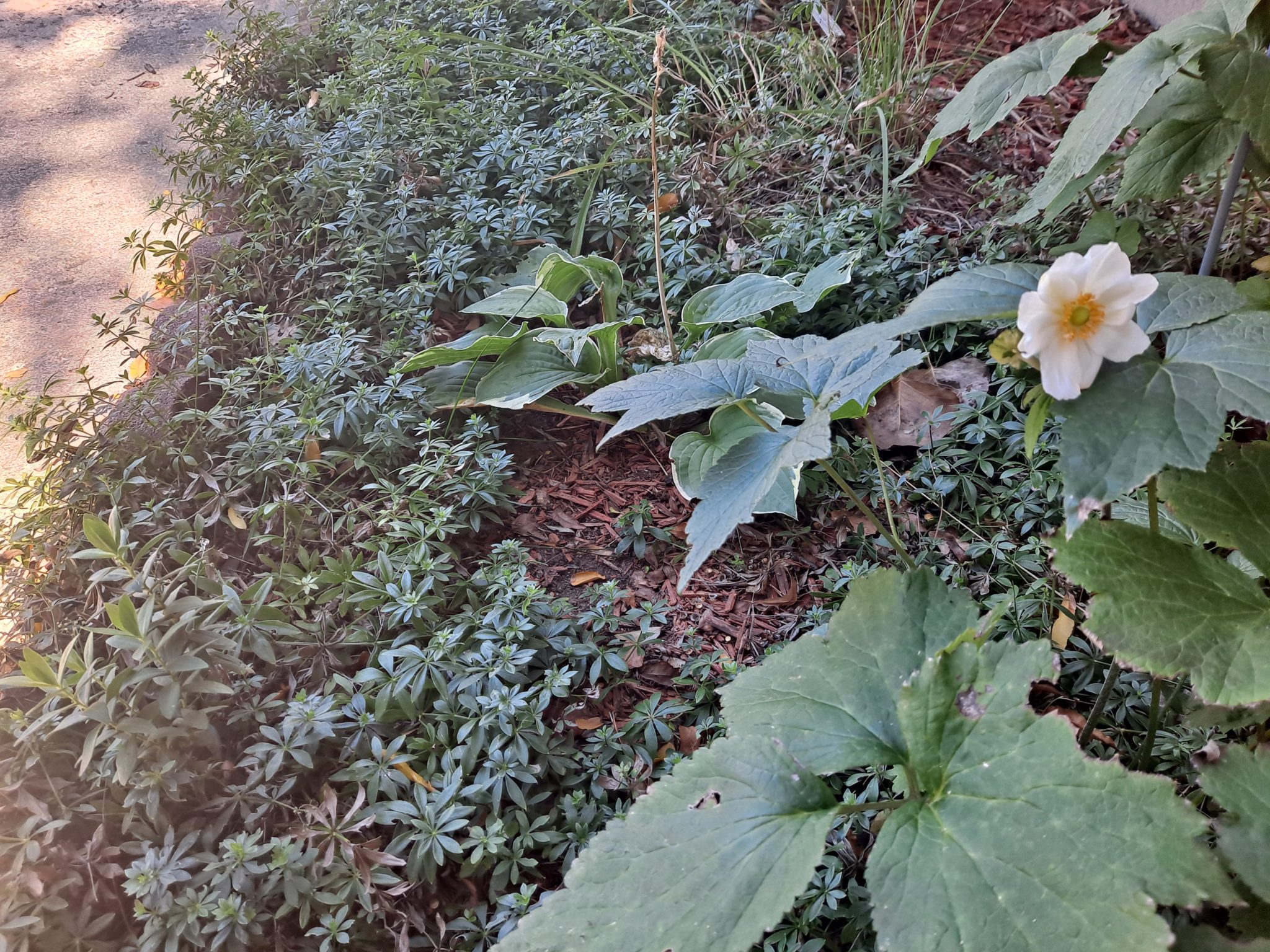
Finally, because it is autumn, here is a photo of a mum in one of our whiskey barrel planters. You can’t go wrong with a mum or two to brighten up the late season landscape.
